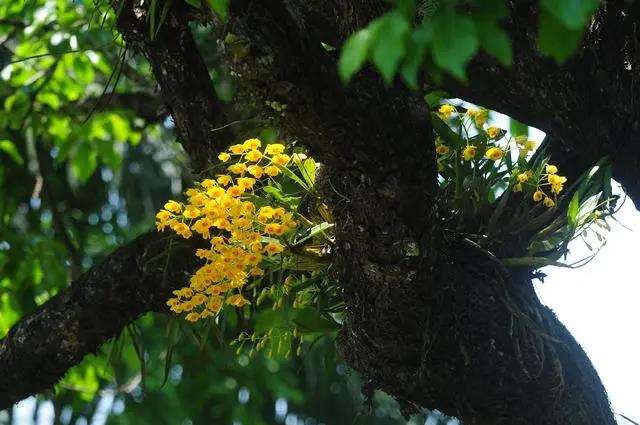Dendrobium chrysotoxum is an epiphytic orchid species that grows on tree trunks or as a lithophyte on rocks. It is of important ornamental and medicinal significance. Over-exploitation of D. chrysotoxum from the wild continues to pose a serious threat to the orchid’s survival.
In a previous study, researchers from Xishuangbanna Tropical Botanical Garden (XTBG) has isolated a Tulasnella fungal strain (GC-15) from D. chrysotoxum protocorms using an in situ seed baiting technique, which is significantly effective at promoting in vitro seed germination and protocorm development. However, the interaction between D. chrysotoxum protocorm and its mycobiont during seed germination is still unclear.
In a recent study published in Horticulturae, the researchers clarified the process of protocorm development as well as the structure and properties of embryos and protocorms in D. chrysotoxum, in order to better understand the mutualism between D. chrysotoxum and its mycobiont.
Using anatomical technologies and scanning electron microscopy (SEM), the researchers investigated detailed morphogenesis changes during the symbiotic germination of D. chrysotoxum inoculated with Tulasnella sp.
There are six developmental stages that were morphologically and anatomically defined during symbiotic seed germination. The embryo transformed into a protocorm at stage two, and a protrusion developed from the top of the protocorm at stage three and elongated to form the cotyledon at stage four. The stem apical meristem (SAM) was initiated at stage three and well developed at stage four. The first leaf and the root appeared at stages five and six, respectively.
Embryos of D. chrysotoxum develop polarized cell regions whose developmental consequences are programmed. Small embryonic cells at the top develop into cotyledons and SAM, and large embryonic cells at the base develop into rhizoids for fungal hyphae accessibility, and special parenchyma cells as a symbiotic place for fungi to colonize.
"Our study provides new insights into the structure and function of epiphytic orchid protocorms and shed light on the symbiont relationship between orchids and fungi," said LUO Yan of XTBG.
Contact
LUO Yan Ph.D
Center for Integrative Conservation, Xishuangbanna Tropical Botanical Garden, Chinese Academy of Sciences, Menglun, Mengla, Yunnan 666303, China
E-mail: luoyan@xtbg.org.cn

Blossoming Dendrobium chrysotoxum. (Image by XTBG)

